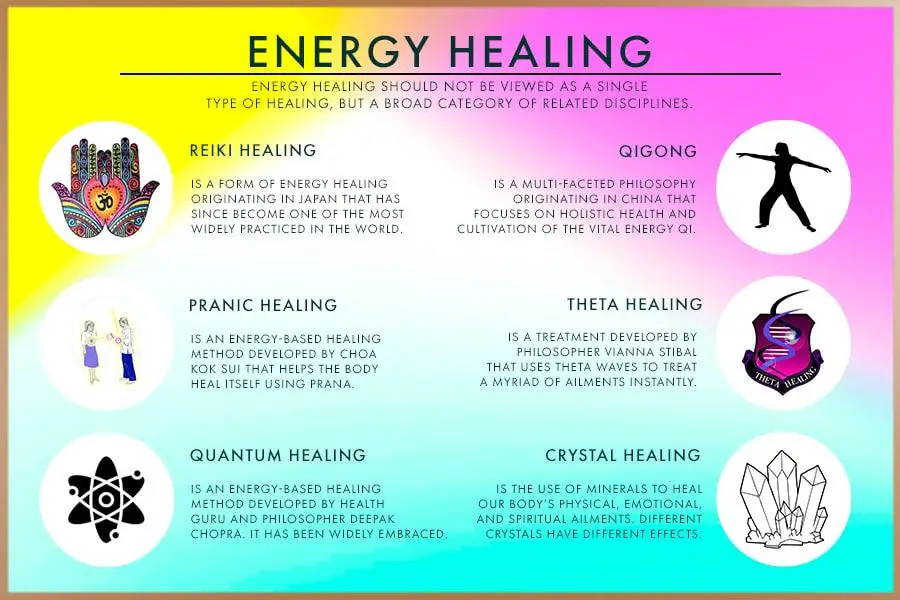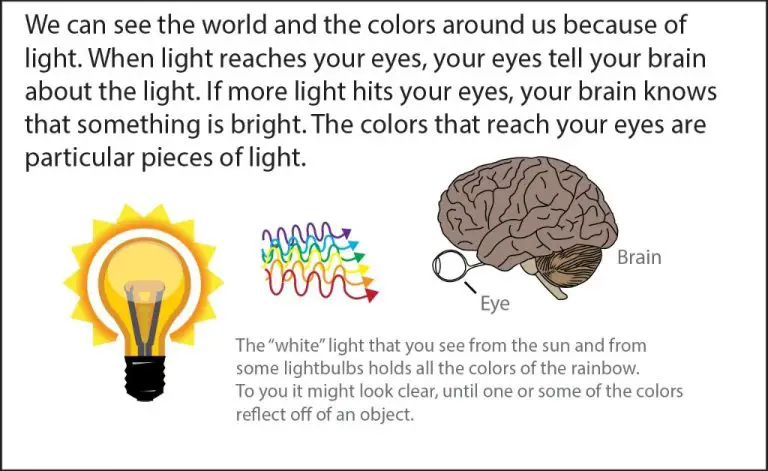Is Somatic Healing The Same As Reiki?
Somatic healing and Reiki are two holistic healing modalities focused on touching the body to promote healing. Both work on the idea that a universal energy or life force flows through the body, and that by manipulating this energy, practitioners can remove energy blockages and restore health and wellbeing.
Somatic healing refers to a variety of body-based practices that integrate the mind and body to heal trauma and pain. It is based on the idea that trauma and stress are held in the tissues of the body, and that by bringing awareness to these areas through touch and movement, healing occurs. Somatic techniques include breathwork, massage, movement therapies and more.
Reiki was developed in 1922 by Mikao Usui in Japan. It involves a practitioner placing their hands lightly on or just above a patient’s body to facilitate the flow of “ki”, a Japanese term loosely translated as life force energy. The practice rests on the premise that a Reiki practitioner can channel healing energy into the patient by using specific hand positions. The main goal is to activate and enhance the body’s capacity to heal itself.
History of Somatic Healing
Somatic healing originated in the 1970s as a holistic approach to therapy developed by Thomas Hanna. Hanna was a philosopher and somatics educator who coined the term “somatics” to describe techniques that engage the mind and body in self-healing.
Hanna believed that many physical and mental health conditions stem from sensory-motor amnesia – a disconnection between the mind and body. Somatic techniques aim to regain mind-body connection through slow, mindful movements.
Early pioneers of somatic healing include Moshe Feldenkrais, developer of the Feldenkrais Method, and Milton Trager, creator of Trager Psychophysical Integration. Over the decades, many somatic modalities emerged such as Hanna Somatics, Continuum Movement, and Bodynamics.
Today, somatic education is taught worldwide in training programs, workshops, and therapy sessions. Numerous scientific studies have demonstrated its effectiveness for pain, trauma, mobility issues and other conditions.
History of Reiki
Reiki was developed in 1922 by Mikao Usui in Japan. According to the International Center for Reiki Training, Usui embarked on a 21-day spiritual retreat and fasting practice on Mount Kurama near Kyoto during which he claimed to have a mystical experience that led to the development of Reiki.
Usui claimed he had gained the ability to channel “healing energy” and teach others to do the same through a mystical ceremony called a reiju empowerment. This ceremony was said to open up and enhance a person’s innate healing abilities. Usui then developed a training system and began teaching Reiki to others in Japan, establishing the Usui Reiki Ryoho Gakkai society.
One of Usui’s students, Chujiro Hayashi, continued to develop and systematize Reiki further. In 1938, a Japanese-American woman named Hawayo Takata learned Reiki from Hayashi in Japan. She subsequently brought Reiki to the West after World War II, establishing training centers and popularizing the practice internationally.
Today, Reiki has spread globally with various schools and lineages derived from Usui’s original teachings. Practitioners are attuned through Reiki master training programs and provide energy healing treatments to clients for a wide range of conditions.
Philosophy and Principles
Somatic healing and Reiki share some similarities in their philosophies and principles, but also have some key differences.
Both emphasize a holistic view of health, recognizing the connections between the mind, body, and spirit. Practitioners of somatic healing and Reiki believe that healing should address the whole person, not just physical symptoms.

However, somatic healing places more emphasis on the body and its innate wisdom to heal itself. Central to its philosophy is the idea that the body has its own innate intelligence and through awareness and movement, the body can release trauma and patterns of dysfunction. Reiki focuses more on channeling healing energy from a universal life force.
Both somatic healing and Reiki value being fully present and cultivating mind-body awareness during sessions. They encourage clients to tune into their bodily sensations. However, somatic healing uses more hands-on techniques and verbal dialogue compared to the light touch and silence typically used in Reiki.
While both have roots in Eastern healing arts like yoga, somatic healing draws more from Western traditions of psychotherapy and physiology. Reiki originated from a Buddhist practice and retains more Eastern spiritual elements involving energy healing and chakras.
Techniques Used
Both somatic healing and Reiki rely on similar techniques to promote healing in the body. The main techniques used include:
Hands-on Healing
In both somatic healing and Reiki, practitioners use light touch or place their hands gently on parts of the client’s body. This allows the practitioner to channel energy into areas where the client needs healing. The hands are used to help direct energy, release tension, and stimulate the body’s natural healing abilities.
Visualization
Visualization involves using the mind to create mental images of health, wellness, and inner balance. In somatic and Reiki sessions, clients are often guided through visualization exercises to imagine pain or illness leaving their bodies.
Meditation
Meditation techniques are commonly incorporated to help quiet the mind, reduce stress, and connect with inner wisdom. Practitioners may guide clients through mindfulness, breathing exercises, or silent meditation during sessions.
Conditions Treated
Both somatic healing and Reiki focus on treating the whole person – mind, body, and spirit. They aim to address physical, mental, and emotional conditions.
For physical conditions, somatic healing and Reiki are commonly used to help manage pain, aid recovery from injury or surgery, relieve side effects of cancer treatment, improve sleep, and more. Practitioners claim they can help with anything from headaches and back pain to autoimmune diseases.
Mentally, both modalities are said to reduce anxiety, depression, and stress. They aim to quiet the mind and nervous system. This helps promote relaxation and positivity.
Emotionally, somatic healing and Reiki can release stuck emotions like grief, anger, sadness, fear, and trauma. By processing these emotions, people report feeling lighter, more balanced, and peaceful.
Overall, the goal is to bring harmony to all aspects of one’s health – physical, mental, and emotional. The treatments take a holistic approach to healing.
Training and Certification
Both somatic healing and Reiki require extensive training and certification for practitioners. Somatic healing practitioners complete training programs that can last from 2-4 years. These intensive programs teach students anatomy, physiology, and psychology, along with hands-on bodywork techniques. Students must complete a certain number of training hours before graduating and becoming certified somatic practitioners.
Reiki training also involves different levels of mastery, typically Reiki Levels 1-3. In Level 1, students learn the basic hand positions and theories of Reiki. Level 2 focuses on deepening the student’s understanding of Reiki symbols and Distance Reiki. Finally, Level 3 trains students in advanced Reiki techniques and how to pass attunements to others. Certification is issued upon completion of each Reiki level. Overall, Reiki training may take 1-2 years to fully complete all levels.
Both somatic healing and Reiki require extensive hands-on practice, mentorship from experienced practitioners, and adherence to ethical principles. Certification ensures practitioners have received proper training before working with clients. Many states also regulate somatic and Reiki practitioners through licensure or registration requirements.
Scientific Research
There are limited quality studies on the efficacy of somatic healing and Reiki due to difficulties in study design and perceived lack of funding priority. Some of the main challenges include:
- Difficulty creating placebo or sham Reiki control groups
- Patient and practitioner blinding is often not possible
- Self-reported outcomes like pain and anxiety are subjective
- Small sample sizes in most studies
A 2011 review looked at 19 clinical trials on Reiki and concluded there was moderate evidence for reduction of pain levels. However, the authors highlighted issues with study quality. A 2016 review found Reiki may help alleviate anxiety, pain and fatigue in cancer patients, but also cited poor study quality as a limitation.
Overall, some studies show promising results for conditions like anxiety, pain and fatigue, but higher quality research is still needed. Factors like the practitioners skill level and patient-practitioner rapport also likely impact outcomes.
Cost and Insurance Coverage
Both somatic healing and Reiki treatments can vary in cost depending on factors like the location, experience of the practitioner, and length of the session. However, there are some general differences in typical costs:
Somatic healing sessions tend to range from $100-$150 per hour on average. Some practitioners may charge more in major metropolitan areas. Most somatic therapy is not covered by health insurance, so clients pay the full fee out of pocket. However, some practices accept flexible payment plans or sliding scale fees based on income.
Reiki sessions are often less expensive, frequently ranging from $60-$100 per hour. Group Reiki classes or treatments may be under $50. Reiki is also typically not covered by insurance, but some providers may offer package deals or loyalty programs to reduce costs for repeat clients. Some holistic centers or community clinics may offer discounted Reiki to increase accessibility.
Both somatic healing and Reiki are considered alternative therapies. While insurance companies don’t cover the cost of treatment, some may allow clients to use pre-tax flexible spending accounts or health savings accounts to pay for sessions, providing a way to reduce out-of-pocket expenses.
Key Differences and Similarities
Both somatic healing and Reiki involve non-invasive energy healing techniques that aim to restore balance and promote self-healing within the body. However, there are some notable differences between the two modalities:
Somatic healing focuses on the connection between the mind and body, using techniques like somatic experiencing, breathing exercises and guided movement. The goal is to resolve suppressed or dysregulated responses in the nervous system. Reiki focuses more on channeling energy through the practitioner’s hands to bring about healing.
Reiki originated from Japanese spiritual teachings and has a more codified system of hand positions and symbols. Somatic healing encompasses a wider array of therapies rooted in Western psychology and neurobiology.
The training for Reiki practitioners is more formalized into different levels, whereas somatic practitioners may have backgrounds in various fields like psychotherapy, dance therapy or yoga. Reiki attunements involve initiation by a Reiki master.
Both modalities embrace a holistic view of health. They involve non-physical healing through accessing the body’s natural energy. The approaches are gentle and non-invasive. They can complement other medical treatments and help alleviate conditions like anxiety, depression and chronic pain. More research is still needed on both Reiki and somatic healing to fully establish their effectiveness.
In summary, while somatic healing and Reiki share some commonalities in their energy-based approach, their techniques, origins and training methods differ. Reiki adheres more closely to a standardized system, while somatic healing draws from a diverse range of therapies and focuses more on the mind-body connection.




